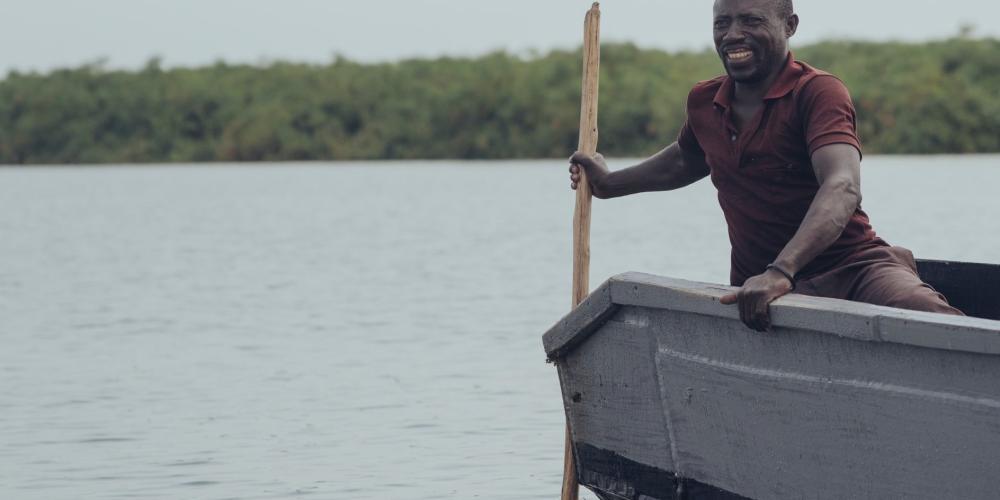Water Resource Management
Water resources sustain aquatic ecosystems that play an outsized role in climate resilience. Effectively managing water resources can help keep human communities alive in the face of climate shocks, and merit special consideration in development efforts.
Bringing Water to All Communities
USAID invests considerable resources in water, sanitation and hygiene (WASH) programs. The agency’s efforts have contributed to 59.6 million people achieving access to sustainable drinking water since 2008 and 44.6 million people achieving access to sustainable sanitation services since 2008. Still, water access remains a challenge around the globe:
- About 1 in 4 people lack safe drinking water in the home
- About half of people lack access to safe sanitation facilities
- About 1 in 3 people lack basic hygiene staples, such as soap and water, in the home
- Diarrhea kills more than half a million children under age 5 every year
As USAID works toward the goal of universal access to WASH by 2030, the agency has prioritized sustainable management of water resources. Providing taps and toilets is not enough to guarantee universal water access over the long term. Water resources must be managed carefully from the local level up if communities around the world are to thrive into the future.
Water and Climate Adaptation
Managing Water for the Long Term
A sustainable water strategy can’t exist without taking into account often fragile aquatic ecosystems, such as wetlands, watersheds, rivers, estuaries and coastal areas, which play an enormous role in supporting global efforts to achieve disaster resilience.
USAID engages with stakeholders from the international and country levels to the local level to ensure that vulnerable people have the tools they need to protect precious sources of water and the ecosystems that make their communities livable.

USAID strives to help communities around the world sustainably manage water resources while expanding safe water and sanitation services to people who need them.
Key Considerations in Water Management
Climate change, pollution and the need to deliver safe water to growing human communities make water resource management a multifaceted challenge. USAID is working to address the complexities of water management in order to protect global communities into the future. The Agency’s technical brief, “Water Resources Management,” identified the following key considerations:
- Increasing water stress, exacerbated by climate change, undermines economic growth and resilience, as well as sustainable access to WASH services, food security and nutrition, health, inclusive development and peace and security. Investing in water resource management is one of the best ways to address rising water stress and adapt to climate change.
- Critical objectives for water resource management programming include achieving more equitable and economically optimized water allocation within basins, improving water quality, managing water quantity and reducing vulnerability to flooding, drought and chronic water scarcity.
- Water resource management is fundamentally a complex governance challenge. Durable solutions require understanding issues at multiple spatial and temporal scales; engaging a broad range of stakeholders and water users to define problems and find opportunities to address them; supporting strong systems of policies, regulations, and incentives; and building in flexibility and adaptive management informed by data.
- Nature-based solutions, such as green infrastructure, are underutilized, but often offer lasting, cost-effective improvements, with multiple co-benefits for water resources, climate change adaptation, communities and ecosystems.
- While a holistic approach to water resource management is important, single-sector actions can still contribute to improved water resource management by expanding sustainable agricultural water management, promoting efficient use of water, reducing sources of pollution and protecting critical ecosystems for the benefit of humans and the natural environment.
This technical brief provides guidance to those working to improve the outcomes of USAID water resource management programs.
More About Water Resource Management
Final Report of the Nomadic and Sedentary Study in Maradi, Tahoua, Zinder and Tillabery (French)
27 Jul 2023 - Niger Stability Support Initiative (NSSI)
Tensions between nomadic and sedentary can escalate into conflict. Read how one activity is exploring conflict management options.
Assessing Communities' Coping Strategies During the Current Drought in Somalia
27 Apr 2023 - Somalia Resilience Population-Level Measurement Activity , Mercy Corps , USAID
The Somalia Resilience Population-Level Measurement Activity explores how households in Somalia are responding to the challenges of drought.
Meeting Immediate Needs and Protecting Development Gains
20 Apr 2023 - USAID , Mercy Corps
After four failed rainy seasons, the Resilience in Pastoral Areas-North Program took a market-driven response to drought in Ethiopia’s Somali region.
Adapt Now: A Global Call for Leadership on Resilience
25 Oct 2022 - Global Commission on Adaptation
Accelerating climate change adaptation is a human, environmental and economic imperative.





